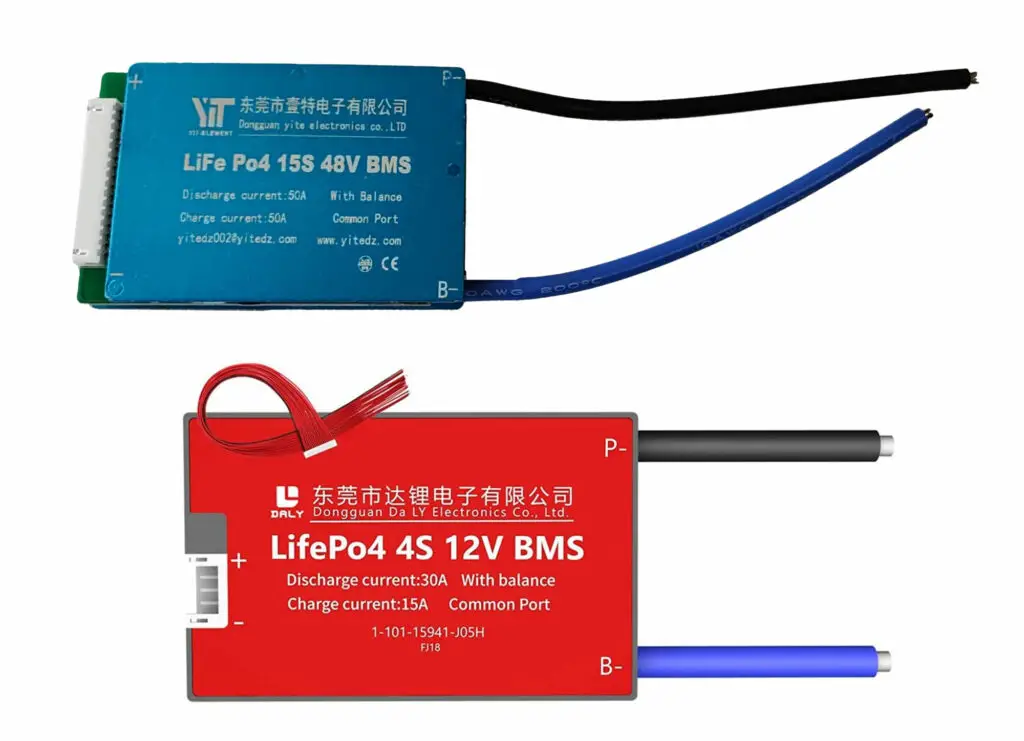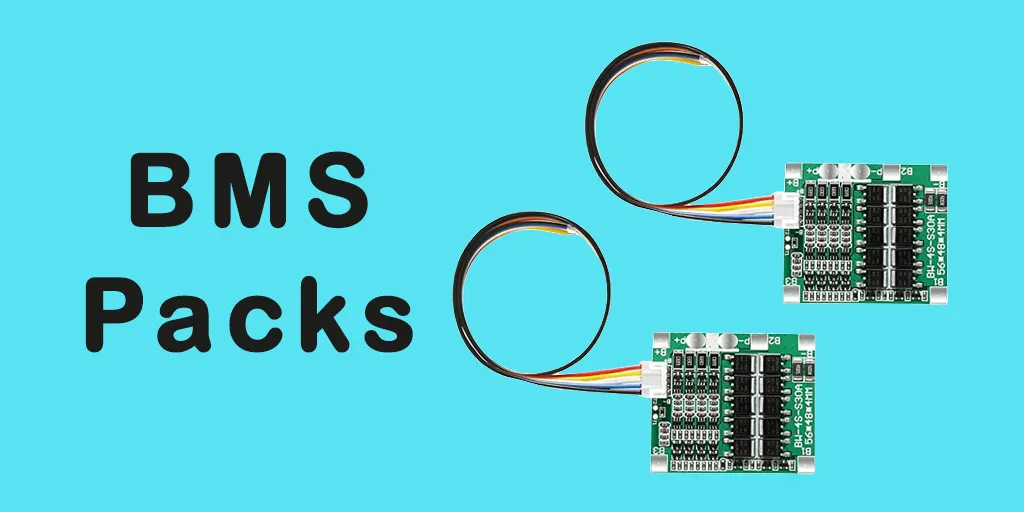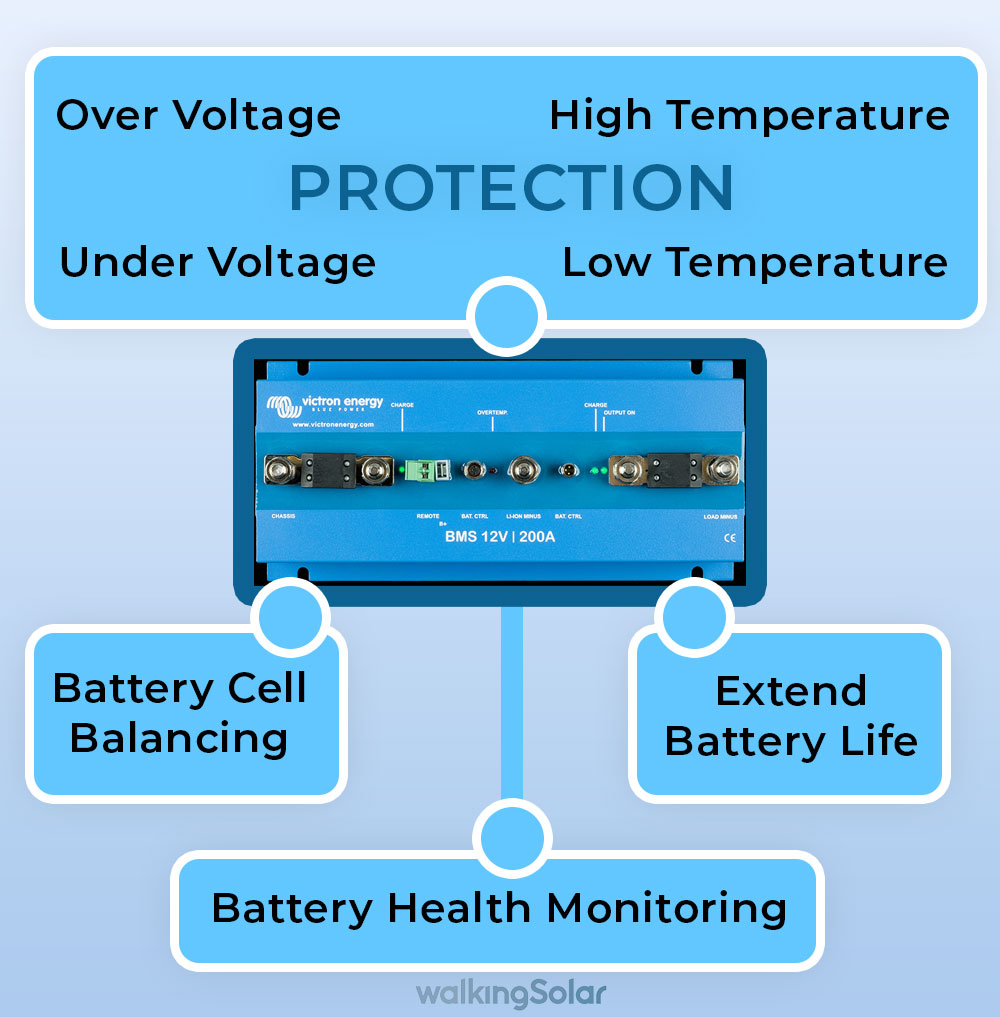Yes. You should use an integrated Battery Management System or BMS with your LiFePo4 batteries.
BMS will monitor and manage your battery, giving it the long life it deserves. You will get up to 5000 cycles from LiFePO4 batteries at 80% depth of discharge.
But in achieving that, you must ensure that you are using the battery properly. It includes selecting & using the correct BMS with your battery system.
BMS in LiFePO4 battery will protect each cell during the charging process and limit its voltage to the right amount. Again, Undervoltage is also bad for this battery while discharging. It can cause a breakdown of the electrode components.
A BMS can protect your battery from that. That’s why you need to install BMS for your LiFePo4 battery cells.
What is a BMS?
Battery Management System is a technology that oversights a battery pack, which is a combination of hardware and software.
It has an assembly of battery cells that are electrically organized in a row x-column matrix configuration to deliver targeted voltage and current for a specific duration and against an expected load.

In plain terms, they protect your battery against any threat and enhance its performance from time to time. But BMA does not have any fixed criteria, instead, it is designed based on many criteria.
You will have to consider your battery size, its complexity, and its cost. It also depends on the application of the battery, its safety, lifespan, and necessary certification from the authority.
What Does BMS Do For LiFePo4 Battery?
In a word, Battery Management System protects LiFePo4 batteries and boosts their performance. But describing it in a word won’t tell you its true purpose. BMS oversights many aspects of LiFePo4 batteries.
According to a study published in the International Journal of Coal Science, BMS is the primary safeguard for a battery system. It also states that BMS ensures a reliable and safe operation of battery cells connected to provide high currents at high voltage levels.
BMS safeguards LiFePo4 batteries in the following aspects.
- It monitors the LiFePo4 battery to safeguard it from any potential threat.
- Protects from under and over-voltage, and any other threats.
- Calculates the overall operational state of the LiFePo4 battery.
- Offers continuous optimization to the battery pack, so you get the best performance from your LiFePo4 battery.
- BMS will send reports to your externally linked device about your LiFePo4 batteries’ operational status.
- It will offer protection to your battery against over-temperature and cell imbalance
Here’s how BMS protects a LiFePo4 battery.
| Protection Against | Condition | BMS Intervention | Time Delay |
| Over Voltage | Cell over voltage 3.65V | Release 3.55V | 2 Second |
| Under Voltage | Under Voltage Limit 2.5V | Release 2.7V | 2 Seconds |
| High Temperature | Charge High Temperature 75°C | Release 55°C | 2 Seconds |
| Low Temperature | Charge Low-Temperature 0℃ | Release 5℃ | 2 Seconds |
Pros And Cons Of Having BMS For LiFePO4
You must integrate BMS with your battery pack to keep it safe from harm’s way. But first, you should know the advantages and disadvantages of using BMS with your battery system.
Here are the advantages of using BMS with the LiFePO4 battery system
Enhances the Performance:
BMS helps increase the performance of LiFePo4 batteries. It ensures that your battery is well charged using either solar power or an external power source, eventually improving the battery’s overall performance and prolonging its lifespan.
Provides Protection:

BMS is mainly required for the safety and protection of your LiFePo4 batteries. This battery itself is very safe, but you must use it properly. A Battery Management System will ensure your battery does not overheat or catch fire.
Reduces Cost:
BMS can reduce the cost of using LiFePo4 batteries. It will prevent overcharging and undercharging your battery, saving you lots of money in the long run.
Stay Updated:
Battery Management System always sends information about your battery’s health to its linked device. As a result, you can always stay updated about your battery.

Now, here are some disadvantages of BMS
Cost:
You will have to spend additional one-time costs for installing a battery management system. It can be quite costly, considering the size of your battery pack. This is one of the disadvantages of LiFePO4 battery systems.
Limitation:
Some limitations are caused by irreversible chemical processes that even a BMS can’t solve.
When Do LiFePO4 Batteries Need BMS?
The Best time is when you are going to establish your LiFePO4 battery pack. In the initial stage. It will help to extend the life of the battery pack.
Some people believe you do not require a BMS to protect your LiFePo4 battery. But it’s not entirely true.
You have to manually check your LiFePo4 battery pack in case you do not use a BMS with your battery. Since LiFePo4 is a well-balanced battery, checking it every 20 to 40 charge cycles would be enough.
But that’s not practical and safe. For consistent protection, it’s expected that you always use a BMS.

Eng. Matthew Joseph Nandirio is the Founder of walkingsolar.
After graduating from the University of Houston in 2002, matt started working as a Solar Electrical Engineer for several multi-national solar energy companies.
He has a wide range of experiences including solar system requirement analysis, planning, maintaining, debugging and even solar device development through research.
He now shares his 20 years of expertise through his articles on the walkingsolar website.
Further, he is also the author of two books on Solar Technology, “Solar Power for Villages” and “DIY Solar System for Dummies”.
